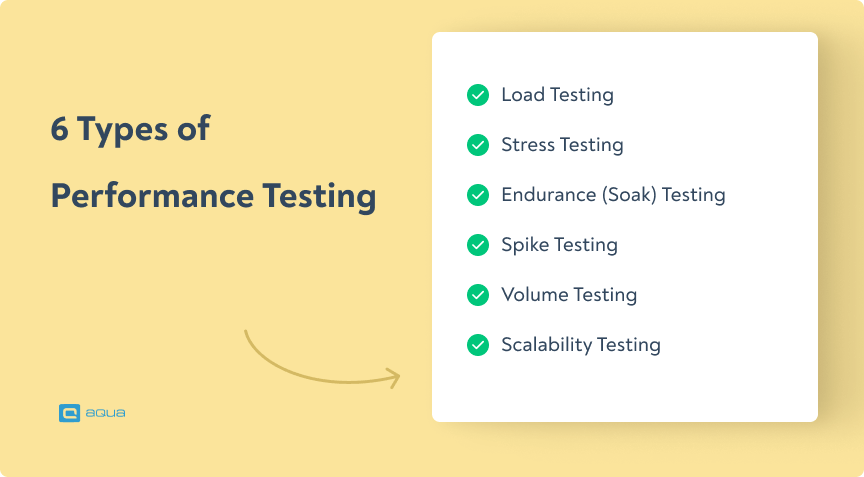What is Performance Testing?
Performance testing is a non-functional testing method that measures how well a system performs under various conditions. While functional testing checks whether software behaves as expected, performance testing focuses on how efficiently it performs.
In simple terms, performance testing verifies how responsive, stable, and scalable your software is under different loads.
For example:
- Functional testing asks, “Does this button work?”
- Performance testing asks, “How fast does it respond when 1,000 users click it at once?”
Performance testing typically evaluates three key aspects:
- Speed – How quickly does the application respond to user actions?
- Stability – Can it remain reliable under changing loads?
- Scalability – How well can it handle increasing demand?
In a nutshell, performance testing is the process of assessing system responsiveness and stability under specific workloads.
Why is Performance Testing Important?
Performance testing directly impacts your bottom line and user satisfaction. Here’s why it’s absolutely critical:
Business Impact
Poor performance frustrates users and costs real money. Consider these sobering statistics from Testlio:
- A 1-second delay in page response can result in a 7% reduction in conversions
- This same delay leads to 11% fewer page views and a 16% decrease in customer satisfaction
- 53% of mobile users abandon sites that take longer than 3 seconds to load
When NVIDIA experienced software quality concerns, their largest customers actually delayed orders for next-generation AI racks, directly affecting revenue projections. The financial consequences of poor performance are very real.
User Experience
Today’s users are less patient than ever. They expect:
- Pages that load instantly
- Transactions that process immediately
- Apps that never crash or freeze
When these expectations aren’t met, they don’t just leave—they tell others about their bad experience. In fact, 88% of users are less likely to return to a site after a bad experience.
Remember, performance testing only works when it’s part of a well-managed, end-to-end process. Focusing on just one type of testing—even performance—can leave critical gaps and lead to costly oversights. That’s where a test management system (TMS) becomes essential. It brings structure, visibility, and alignment across your entire testing suite.
Aqua cloud is a perfect example of such TMS. It centralises your entire testing process—manual, automated, functional, and performance—into a single, AI-powered platform. With native integrations for tools like JMeter, Selenium, and Jenkins, it allows you to orchestrate performance tests alongside other QA activities seamlessly. Features like customisable KPI alerts and detailed reporting ensure you stay ahead of performance issues, while 100% traceability keeps your testing structured and compliant. Generative AI capabilities like requirements, test cases, and test data creation save you up to 98% of time, while one-click bug-recording integration Capture eliminates all the guesswork in reproducing issues.
Move 2x faster in your test management efforts without sacrificing quality
System Reliability
Performance issues often reveal underlying problems that might not be apparent during functional testing:
- Memory leaks that cause gradual degradation
- Database queries that perform poorly at scale
- Resource utilisation inefficiencies
These issues might not show up during basic testing but will emerge under real-world conditions.
Early Problem Detection
Finding performance issues early in development is vastly cheaper than fixing them in production. Fixing issues in production can cost up to 100x more than addressing them during design or development.
Competitive Advantage
In crowded markets, performance can be a key differentiator. Users will choose the faster, more reliable option when given a choice between functionally similar products.
Neglecting performance testing has real consequences. In early 2023, several major banking apps crashed during peak hours, locking users out of their accounts and triggering public backlash. These failures were avoidable and costly.
Types of Performance Testing
Understanding the different types of performance tests is crucial for effective testing. Performance testing types vary depending on what aspect of your application you need to evaluate. Let’s break down the major types:
1. Load Testing
What it is: Load testing measures how your application performs under expected load conditions. It helps determine if your system meets performance requirements when handling normal or peak user loads.
When to use it:
- Before launching new applications or features
- To benchmark performance during development
- To verify system performance after updates
Example: An e-commerce site testing how its checkout process handles 500 concurrent users during a sales event.
The best way is to check all metrics and search for anomalies. First metrics I check are:
1. 90 and 99 percentiles
2. Latencies
3. Errors or other responses
4. Resources on host (CPU, ram, disk)
2. Stress Testing
What it is: Stress testing pushes your system beyond normal operating conditions to identify breaking points. It helps you understand how your system fails and whether it can recover gracefully.
When to use it:
- To prepare for unexpected traffic spikes
- To identify performance limits and bottlenecks
- To test failover and recovery mechanisms
Example: Testing an application with 200% of the expected maximum user load to see at what point it crashes and how it recovers.
3. Endurance Testing (Soak Testing)
What it is: Endurance testing runs your system under sustained load for an extended period. It helps identify issues that only emerge over time, like memory leaks or resource depletion.
When to use it:
- For applications that need to run continuously
- To detect gradual performance degradation
- To verify system stability over time
Example: Running a banking system continuously for 24 hours with a moderate load to ensure transactions remain speedy and resources aren’t gradually consumed.
4. Spike Testing
What it is: Spike testing evaluates how your system responds to sudden, dramatic increases in load.
When to use it:
- For applications that experience unpredictable traffic surges
- To verify system behaviour during flash sales or viral events
- To test auto-scaling capabilities
Example: A ticket booking platform suddenly receives 10,000 requests when concert tickets go on sale.
5. Volume Testing
What it is: Volume testing assesses how your system performs when processing large amounts of data.
When to use it:
- For data-intensive applications
- When testing database performance
- For systems that handle large files or datasets
Example: A data analytics platform processing and analysing a 500GB dataset to verify that response times remain acceptable.
6. Scalability Testing
What it is: Scalability testing determines how effectively your system can scale up or down to meet changing demands.
When to use it:
- When planning for growth
- To optimise resource allocation
- To test cloud infrastructure elasticity
Example: Gradually increasing users from 100 to 10,000 while monitoring response times and resource usage to identify scaling limitations.
Performance test types vary in purpose and methodology, but understanding these different types of performance tests helps you create a comprehensive performance testing strategy. Choosing the right test types depends on your application’s specific requirements and usage patterns. Most comprehensive strategies incorporate multiple test types to ensure thorough coverage.

Common Performance Problems
Understanding the typical performance issues that plague applications helps you identify and address them before users experience them. A strong performance testing training program would cover these issues in detail. Here are the most common performance problems you’re likely to encounter:
Slow Response Times
What it looks like: Pages take too long to load, actions have noticeable delays, and users get frustrated waiting.
Business impact: Even seemingly minor delays have major consequences, as we mentioned above: a 100-millisecond delay in website load time can reduce conversion rates by 7% or 40% of users abandon a website that takes more than 3 seconds to load
Common causes:
- Inefficient code or algorithms
- Unoptimised database queries
- Too many HTTP requests
- Uncompressed resources (images, JavaScript, CSS)
Poor Scalability
What it looks like: The application works well with a few users but degrades significantly as user numbers increase.
Business impact:
- Unable to capitalise on growth opportunities
- Requires constant infrastructure investment
- Lost revenue during high-traffic periods
Common causes:
- Architectural limitations
- Resource contention
- Lack of caching
- Synchronous processing bottlenecks
Memory Leaks
What it looks like: The application gradually consumes more memory over time, eventually leading to slowdowns or crashes.
Business impact:
- The system requires frequent restarts
- Unpredictable failures
- Poor user experience for long-running sessions
Common causes:
- Objects not properly released from memory
- Circular references
- Cached data never cleared
- Improper resource management
Database Bottlenecks
What it looks like: Database-related operations become increasingly slow as data volume or user concurrency increases.
Business impact:
- Transaction times out
- Search operations become unbearably slow
- Reports take too long to generate
Common causes:
- Missing or improper indexes
- Inefficient query design
- Lack of database caching
- Connection pool limitations
Resource Saturation
What it looks like: CPU, memory, disk I/O, or network bandwidth reaches maximum capacity, causing overall system slowdown.
Business impact:
- Unexpected infrastructure costs
- Inability to handle peak loads
- System-wide performance degradation
Common causes:
- Inefficient resource usage
- Inadequate capacity planning
- Resource-intensive background processes
- Improper load balancing
Third-Party Service Dependencies
What it looks like: Your application slows down or fails because an external service it depends on is performing poorly.
Business impact:
- Issues outside your direct control
- Cascade of failures through the system
- Loss of critical functionality
Common causes:
- API rate limiting
- External service outages
- Network latency
- Improper timeout handling
Each of these problems can significantly impact user experience and business outcomes, but they can all be identified through effective performance testing. If you detect these issues early, you can implement solutions before they affect real users.
How to Perform Performance Testing
Getting started with performance testing might seem overwhelming, but breaking it down into manageable steps makes the process straightforward. If you’re wondering how to do performance testing effectively, follow this comprehensive guide on the performance testing process:
1. Identify Your Testing Environment
Start by thoroughly understanding and documenting your test environment:
- Hardware specifications
- Network configuration
- Database setup
- Third-party services and integrations
- Software versions and configurations
Your test environment should mirror your production environment as closely as possible to ensure realistic results. If perfect replication isn’t feasible, document the differences and account for them when analysing results.
2. Define Performance Acceptance Criteria
Establish clear performance goals before you start testing:
- Response time expectations (e.g., “pages should load in under 2 seconds”)
- Throughput requirements (e.g., “system must handle 500 transactions per minute”)
- Resource utilisation limits (e.g., “CPU usage should stay below 70%”)
- Error rate thresholds (e.g., “error rate must remain under 1%”)
These criteria should be based on business requirements, user expectations, and technical capabilities.
3. Plan & Design Performance Tests
Developing a thorough performance test planning approach is essential. Develop detailed test scenarios that reflect real user behaviour:
- Identify key user journeys to test
- Determine user load patterns (steady, increasing, or spiking)
- Define test data requirements
- Select appropriate test types (load, stress, endurance, etc.)
- Establish test duration and monitoring approach
Your test plan should document all these details and get stakeholder approval before proceeding.
4. Configure the Test Environment
Prepare your environment for performance testing:
- Set up monitoring tools to capture metrics
- Configure the necessary test data
- Ensure the environment is isolated from external influences
- Verify baseline performance before adding load
- Install and configure your chosen testing tool
5. Implement Test Design
Create and validate your test scripts:
- Script the user journeys identified in your test plan
- Include think time between actions to simulate real users
- Define appropriate load patterns
- Add validation points to verify correct system behaviour
- Run small-scale validation tests to ensure scripts work correctly
Most performance testing tools like JMeter allow you to record user actions and convert them into reusable test scripts.
6. Run the Tests
Execute your performance tests according to the plan:
- Start with lower loads and gradually increase to target levels
- Monitor system performance in real-time
- Document any observations or anomalies
- Maintain test logs for future reference
- Ensure adequate time between test runs if using the same environment
7. Analyse, Tune and Retest
After completing tests, thoroughly analyse the results:
- Compare results against acceptance criteria
- Identify performance bottlenecks
- Analyse resource utilisation patterns
- Look for correlations between different metrics
- Develop optimisation recommendations
Implement optimisations and retest to verify improvements. This iterative cycle continues until performance meets or exceeds requirements.
Sample Performance Test Plan Structure
| Section | Content |
|---|---|
| Test Objectives | Clear statement of what the testing aims to achieve |
| System Architecture | Overview of components being tested |
| Test Environment | Details of hardware, software, and network configuration |
| Performance Metrics | List of metrics to be collected and analyzed |
| User Scenarios | Description of user journeys being tested |
| Load Profiles | Patterns of user load to be applied |
| Test Schedule | Timeline for test execution |
| Responsibilities | Team members and their roles in the testing process |
| Risks and Mitigations | Potential issues and how they’ll be addressed |
Learning how to perform tests begins with understanding this structured approach, which ensures comprehensive testing that identifies issues before they impact real users. A well-designed performance test tutorial should always emphasise the importance of this systematic process.
Performance Testing Metrics
Tracking the right performance metrics is crucial for understanding your application’s behaviour under various conditions. Here are the key metrics you should monitor during performance testing:
Response Time Metrics
Average Response Time
The average time it takes for your application to respond to a request. These are the benchmarks you need to keep in mind:
- Web applications should respond in under 2 seconds
- Mobile applications should respond in under 1 second
Peak Response Time
The longest response time recorded during testing.
- Helps identify worst-case scenarios
- Should not exceed 3x the average response time
Server Response Time
Time taken for the server to process a request before sending data back.
- Helps isolate whether slowdowns are server or client-side
- Target: Under 100ms for API responses
Throughput Metrics
Transactions Per Second (TPS)
The number of transactions your system can process per second.
- Higher is better, but must be balanced with response time
- Calculate: Total Transactions ÷ Total Test Time
Requests Per Second
The number of HTTP requests your server can handle per second.
- Critical for web applications
- Helps determine server capacity requirements
Resource Utilisation Metrics
CPU Usage
Percentage of processor capacity being used.
- Should generally stay below 70-80% under load
- Consistent high CPU usage indicates processing bottlenecks
Memory Usage
Amount of physical memory being consumed.
- Watch for upward trends that don’t plateau (potential memory leaks)
- Monitor both heap and non-heap memory for Java applications
Disk I/O
Rate of read/write operations to disk.
- High disk activity can indicate inefficient caching or database queries
- SSDs significantly outperform HDDs for high I/O applications
Network Utilisation
Bandwidth consumed by the application.
- Helps identify network bottlenecks
- Excessive network traffic may indicate unoptimized resources
Reliability Metrics
Error Rate
Percentage of requests resulting in errors.
- Target: Below 1% under normal load
- Calculate: (Error Count ÷ Total Requests) × 100
Concurrent Users
Maximum number of simultaneous users the system can support.
- Critical for understanding system capacity
- Should exceed the maximum expected concurrent users
Database Metrics
Query Response Time
How long do database queries take to execute?
- Slow queries often cause application bottlenecks
- Target: Under 50ms for common queries
Connection Pool Usage
Utilisation of database connection pools.
- High utilisation may indicate connection leaks or an insufficient pool size
- Monitor both active and idle connections
| Metric Category | Key Metrics | Optimal Range | Warning Signs |
|---|---|---|---|
| Response Time | Average Response Time | <2s for web apps | Steady increase over time |
| Peak Response Time | <3x average | Outliers >5x average | |
| Throughput | Transactions Per Second | Depends on requirements | Decreasing under load |
| Requests Per Second | Depends on requirements | Sudden drops | |
| Resource | CPU Usage | 50-70% | Consistent >80% |
| Memory Usage | Stable plateau | Continuous growth | |
| Disk I/O | <50ms latency | Queue length >2 | |
| Reliability | Error Rate | <1% | >5% under load |
| Concurrent Users | Exceeds expected peak | Response degradation |
Tracking these metrics gives you a clear picture of how your app is performing and shows you exactly where it needs improvement.
Performance Testing Test Cases Examples
To run meaningful performance tests, you need test cases that reflect how people actually use your app. Here are some real-world scenarios you can use or adapt.
Test Case 1: Homepage Load Performance
Objective: Verify the homepage loads within an acceptable time under various user loads.
Test Steps:
- Navigate to the homepage
- Measure page load time
- Repeat with 100, 500, and 1000 concurrent users
Metrics to Monitor:
- Page load time
- Time to First Byte (TTFB)
- Time to Interactive (TTI)
- Server response time
- Error rate
Acceptance Criteria:
- Page loads in <2 seconds with 100 users
- Page loads in <3 seconds with 500 users
- Page loads in <4 seconds with 1000 users
- Error rate remains <1%
Test Case 2: User Login Scalability
Objective: Ensure the login system handles peak user authentication requests.
Test Steps:
- Execute login requests with valid credentials
- Gradually increase from 10 to 1000 concurrent logins over 10 minutes
- Maintain peak load for 5 minutes
- Measure response times and success rates
Metrics to Monitor:
- Authentication response time
- Database query performance
- CPU and memory usage on authentication servers
- Session creation rate
Acceptance Criteria:
- Login response time <1.5 seconds at peak load
- Success rate >99%
- No degradation in performance over the 5-minute peak period
Test Case 3: Shopping Cart Checkout Process
Objective: Verify that the checkout process performs well during sales events.
Test Steps:
- Add products to the cart
- Proceed to checkout
- Complete payment information
- Submit order
- Simulate 500 concurrent users performing this workflow
Metrics to Monitor:
- Transaction response time
- Database transaction rate
- Payment gateway response time
- Order confirmation time
- Cart abandonment due to performance issues
Acceptance Criteria:
- Complete checkout process in <8 seconds
- Payment processing in <3 seconds
- Database locking/contention issues <0.1%
- Order confirmation success rate >99.5%
Test Case 4: Search Functionality Performance
Objective: Ensure the search function remains responsive under heavy load.
Test Steps:
- Execute search queries with varying complexity
- Include common, rare, and non-existent search terms
- Run with 200 concurrent users performing searches
Metrics to Monitor:
- Search response time
- Database query execution time
- Result rendering time
- Result accuracy
Acceptance Criteria:
- Simple search results in <1 second
- Complex search results in <2 seconds
- No degradation in result quality under load
Test Case 5: API Endpoint Performance
Objective: Verify API endpoints meet performance requirements for third-party integrations.
Test Steps:
- Make calls to key API endpoints
- Increase request rate from 10 to 1000 requests per second
- Maintain peak load for 5 minutes
Metrics to Monitor:
- Response time
- Throughput (requests/second)
- Error rates
- CPU and memory usage
Acceptance Criteria:
- 95th percentile response time <200ms
- 99th percentile response time <500ms
- Error rate <0.5%
- Consistent throughput at peak load
Test Case 6: Content Upload Performance
Objective: Ensure the system handles multiple simultaneous file uploads efficiently.
Test Steps:
- Upload files of various sizes (1MB to 50MB)
- Simulate 100 concurrent uploads
- Monitor system performance during and after uploads
Metrics to Monitor:
- Upload speed
- File processing time
- Storage I/O performance
- Memory usage during file processing
Acceptance Criteria:
- 10MB file upload completes in <10 seconds
- The system maintains responsiveness during uploads
- No memory leaks after repeated uploads
These example scenarios are just a starting point. Every performance test should be adapted to your app (or website) and its goals, so they reflect real user behaviour and what matters most to your business.
Performance Testing Tools
Selecting the right performance testing tools is crucial for effective testing. A good performance test framework can significantly enhance your testing capabilities. Here’s an overview of popular tools with their strengths, limitations, and ideal use cases:
Apache JMeter
Overview: A free, open-source load testing tool that’s become an industry standard for performance testing.
Key Features:
- Supports multiple protocols (HTTP, HTTPS, JDBC, LDAP, SOAP, REST)
- Highly extensible through plugins
- Cross-platform compatibility (Java-based)
- Strong community support and extensive documentation
- Scriptless test creation with recording capabilities
Best For:
- Teams with budget constraints
- Web applications and API testing
- Projects requiring customisation
- Integrating with CI/CD pipelines
Limitations:
- Steeper learning curve than commercial tools
- Resource-intensive for very large-scale tests
- Limited reporting capabilities out of the box
LoadRunner Professional (Micro Focus)
Overview: An enterprise-grade performance testing solution with comprehensive capabilities.
Key Features:
- Support for over 50 protocols and technologies
- Advanced analytics and reporting
- Realistic network simulation
- Integrated with other Micro Focus testing tools
- Extensive correlation capabilities for dynamic values
Best For:
- Enterprise applications
- Complex testing scenarios
- Organisations with diverse technology stacks
- Teams requiring detailed analysis capabilities
Limitations:
- Expensive licensing model
- Resource-intensive installation
- Steeper learning curve
Gatling
Overview: A modern load testing tool focusing on developer-friendly approaches.
Key Features:
- Code-based approach using Scala
- Excellent for API and microservices testing
- Highly scalable architecture
- Rich and interactive HTML reports
- Integrates well with CI/CD pipelines
Best For:
- Developer-centric testing approaches
- API and microservices testing
- Teams familiar with coding
- Projects requiring high scalability
Limitations:
- Less intuitive for non-technical users
- Limited protocol support compared to JMeter
k6 (Grafana k6)
Overview: A developer-centric, open-source load testing tool with a focus on developer experience.
Key Features:
- JavaScript-based scripting
- Cloud and local execution options
- Rich extensibility through JavaScript
- Integration with monitoring tools
- Built for modern development workflows
Best For:
- Developer-led performance testing
- JavaScript/frontend developers
- Modern web applications and APIs
- Teams using DevOps practices
Limitations:
- Limited protocol support
- Less suitable for GUI-based applications
Current performance automation engineer here. I used Jmeter for years but now use a tool called K6. Jmeter can do what you need but I would agree that it is dated, GUI based (intimidating and manual), hard to version control (xml hell) and resource hungry. In the end thou, it does work and has some good out of the box features.
LoadNinja
Overview: A cloud-based, browser-focused performance testing platform.
Key Features:
- True browser-based load testing
- Scriptless test creation
- Detailed analytics with browser-level metrics
- Virtual user debugger capabilities
- Multi-location testing options
Best For:
- Web applications with complex front-ends
- Teams without scripting expertise
- Quick setup and execution
- SaaS applications
Limitations:
- Higher cost for large-scale tests
- Less flexible than code-based tools
- Limited protocol support beyond web
Tool Selection Guidelines
Choosing a performance testing tool is not an easy job. When doing it, consider these factors:
| Consideration | Questions to Ask |
|---|---|
| Application Technology | What protocols does your application use? What technologies does it employ? |
| Team Skills | Does your team prefer coding or GUI-based approaches? What languages are they comfortable with? |
| Budget | What’s your budget for testing tools? Do you prefer open-source or commercial solutions? |
| Scale Requirements | How many virtual users do you need to simulate? From which geographic locations? |
| Integration Needs | What other tools (CI/CD, monitoring) must it integrate with? |
| Reporting Requirements | What level of analysis and reporting detail do you need? |
No single tool fits every situation. Most teams rely on a mix of tools for different testing needs and development stages. Start with one that fits your current goals, and add more as your needs grow.
While the tools above can help you run performance tests, managing them across teams and test types can get messy. aqua cloud brings everything together in one place—manual, automated, and performance tests—so nothing falls through the cracks. With native integrations, built-in reporting, and 100% traceability, you stay in control of every test run. Plus, AI-generated test cases and real-time analytics cut hours of manual work.
Manage all your testing in one AI-powered platform
Performance Testing: Key Takeaways
Let’s recap the key takeaways:
- Performance matters: Even small delays can significantly impact user satisfaction and business success. A one-second delay can reduce conversions by 7% and customer satisfaction by 16%.
- Different testing types serve different purposes: Load, stress, and endurance tests each reveal different things. Use them to understand how your app performs under pressure.
- Common performance problems are preventable: Test early for things like slow response times, poor scalability, or resource overload—before they reach your users.
- A structured approach works best: A complete approach, from setting up your test environment to reviewing the results, helps you cover all the bases and get useful insights.
- The right metrics tell the complete story: Monitoring key metrics across response time, throughput, resource utilisation, and reliability provides a holistic view of performance.


















